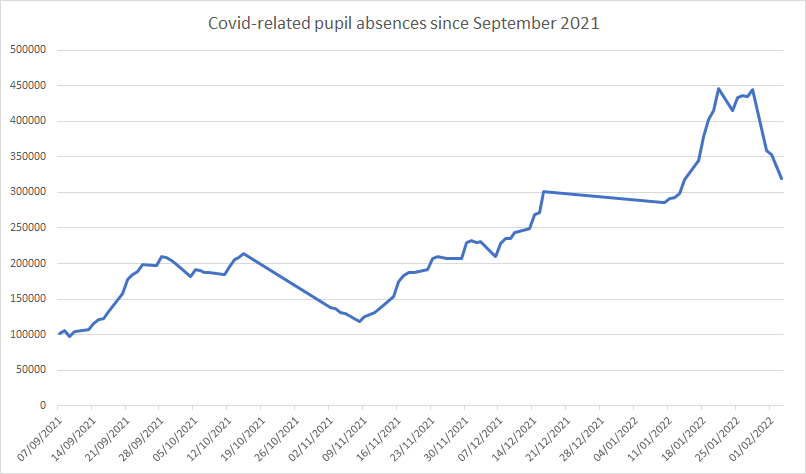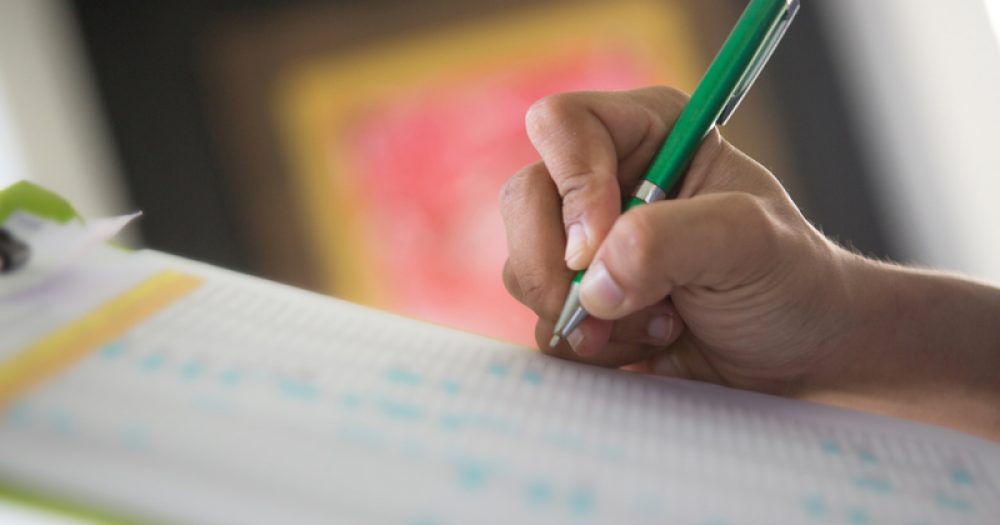New attendance data suggests the tide is beginning to turn on Covid pupil absence, but the education of hundreds of thousands is still disrupted by the Omicron variant.
Overall attendance rates improved for the first time this term after the first substantial drop in the number of Covid-related absences seen since November.
However, the proportion of staff off school remains at around 9 per cent, with heads warning there still remains a “major headache” over cover.
1 in 25 pupils still off because of Covid
Department for Education attendance survey data estimates around 320,000 pupils, 3.9 per cent of the population, were absent for Covid-related reasons on February 3, down from 415,000, or 5.1 per cent, on January 20.
Among those off because of Covid, 250,000 had a confirmed case, down from 322,000, a record high, two weeks earlier. 34,000 were off with a suspected case, down from 52,000.
However, underlying data shows the picture got worse before starting to improve. On January 28, an estimated 444,900 children, or 5.4 per cent of the population, were off because of Covid.

Attendance rates rise as Covid absences drop off
Overall, pupil attendance rose to 89.1 per cent on February 3, up from 87.4 per cent on January 20.
But secondary schools remain worse-affected by absences, with attendance of 86.2 per cent on February 3, compared to 91.9 per cent in primary schools.
Geoff Barton, general secretary of the ASCL school leaders’ union, said falling numbers was “good to see”, but warned the “major headache for many education leaders remains one of trying to plug the gaps left by having almost a tenth of their teaching staff absent”.
Almost 1 in 10 staff absent
Covid-related absence rates among staff fell slightly last week, but the proportion of staff off for other reasons rose, leaving overall absences at around 9 per cent.
Staff absence also remains concentrated in some schools. Twenty-three per cent of state schools said they had more than 15 per cent of teachers and leaders absent on February 3, down slightly on two weeks before.
Barton said the staff absence situation left many schools with “no option other than to continue to spend more of their dwindling budgets on supply staff, assuming that suitable staff are available”.
Decreasing numbers of Covid-related absences seen last week represent a reversal of an upward trend since the beginning of the academic year, though absences did also decrease slightly in early November 2021, following the October half term.
10k schools sign up to attendance tracker pilot
The DfE has also revealed today that 10,000 schools have signed up to its trial of a “real-time” attendance tracker, which will gather data from school registers to help address absences more quickly.
In an email to headteachers, the department said it would use the data to identify “national, regional and local trends” on school attendance. Where the data suggests “particular issues” in councils or academy trusts, the DfE said it would “signpost them to helpful resources”.
Data collected will include pupil’s names, gender and ethnicity. It will also include whether they are looked-after, previously looked-after, receiving SEN support or on an EHC plan, and whether they are eligible for free school meals.
The DfE said it was collecting pupils’ names to “reflect the school census collection and enable future matching to the vulnerable child indicators for safeguarding purposes”.















Your thoughts